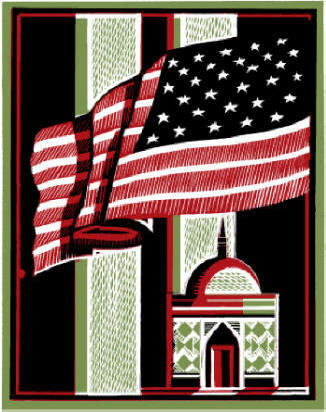Far be it from me to disrespect Pew’s new U.S. Religion Landscape Survey, long may its fact-tankers continue to scope the ‘scape. But for years now I’ve been following the story of how they count Muslims in America, and this latest survey adds an interesting new chapter to the saga.
The latest is that Muslims now constitute .9 percent of the adult U.S. population, which (adding .2 percent for children) translates into a total U.S. Muslim population of about 3.2 million. That’s less than half of what Muslim advocacy groups estimated over a decade ago, and though there’s been a certain amount of protest by those groups, survey after survey, by Pew and others, have consistently found the Muslim population to be under one percent.
But here’s the thing. Pew reports that he proportion of Muslims has more than doubled since its last landscape survey seven years ago, when the number was .4 percent. But if you go to the actual 2008 Landscape Survey. you’ll find the proportion of Muslims reported at .6 percent. What gives?
Well, in a June 2008 conference call on the report, Pew researcher Gregory Smith allowed as how the 116 Muslims identified in the survey constituted .3 percent of the sample, that the percentage was upped to .4 percent for statistical purposes, but then that .6 percent was reported because, Smith said, “it comes from a survey that included languages in addition to English – Arabic, Urdu, and Farsi; we think that’s a more accurate estimate of the Muslim share of the U.S. population.”
He was referring to Pew’s 2007 survey, “Muslim Americans,” about which Pew Forum director Luis Lugo said, “Believe me, Mark, we’re still pulling the arrows out from the 0.6 percent estimates of adult Muslims in this country among American adults.”
OK, so next we turn to Pew’s 2009 report, “Mapping the Global Muslim Population,” which puts the U.S. Muslim population at .8 percent, based on a projection from the 2007 survey. The 33 percent increase in two years is pretty hefty: at that rate, the Muslim proportion of the U.S. population would now be up around 1.5 percent. But in its 2011 report, “The Future of the Global Muslim Population,” Pew stuck with the .8 percent number, projecting an increase to 1.7 percent by 2030.
Which brings us back to the current Landscape Study. The raw numbers show 237 Muslims out of a total sample of 35,071, which is less than .7 percent. Pew’s reported number of .9 percent evidently represents a statistical adjustment. (By contrast, the Jewish population was adjusted down from 2.4 percent to 1.9 percent; the previous downward adjustment was from 1.9 percent to 1.7 percent.)
That facts are that the actual number of Muslims identified in the two landscape surveys doubled, from 114 to 237, representing a raw proportional increase from a little over .3 percent to something under .7 percent. All other Pew numbers are based on statistical adjustments, different survey methodologies, and projections.
I’m prepared to believe that the proportion of Muslims in America has increased by a few tenths of a percentage point over the past decade, and that the total number of Muslims in America remains under one percent. That’s about it.






